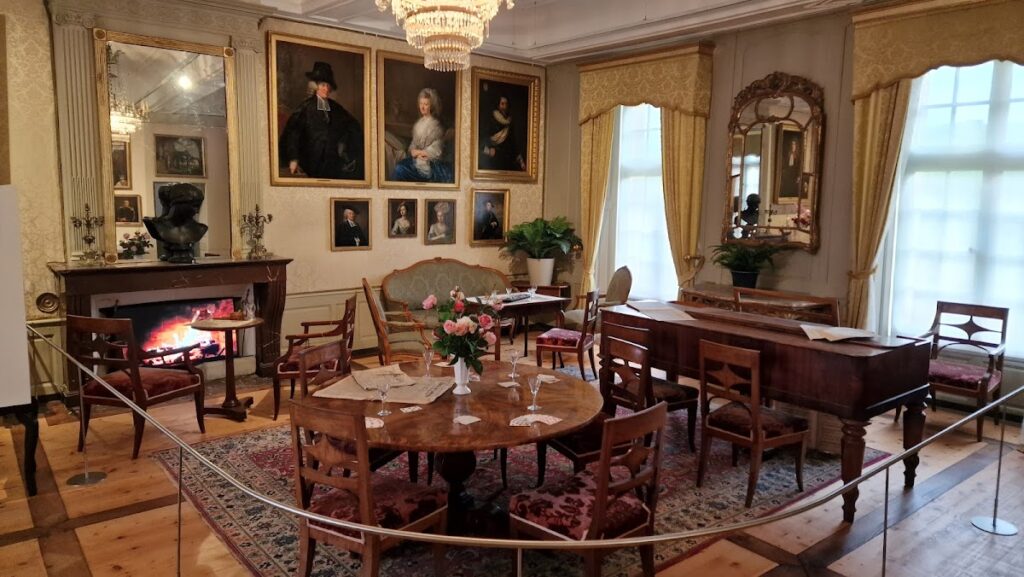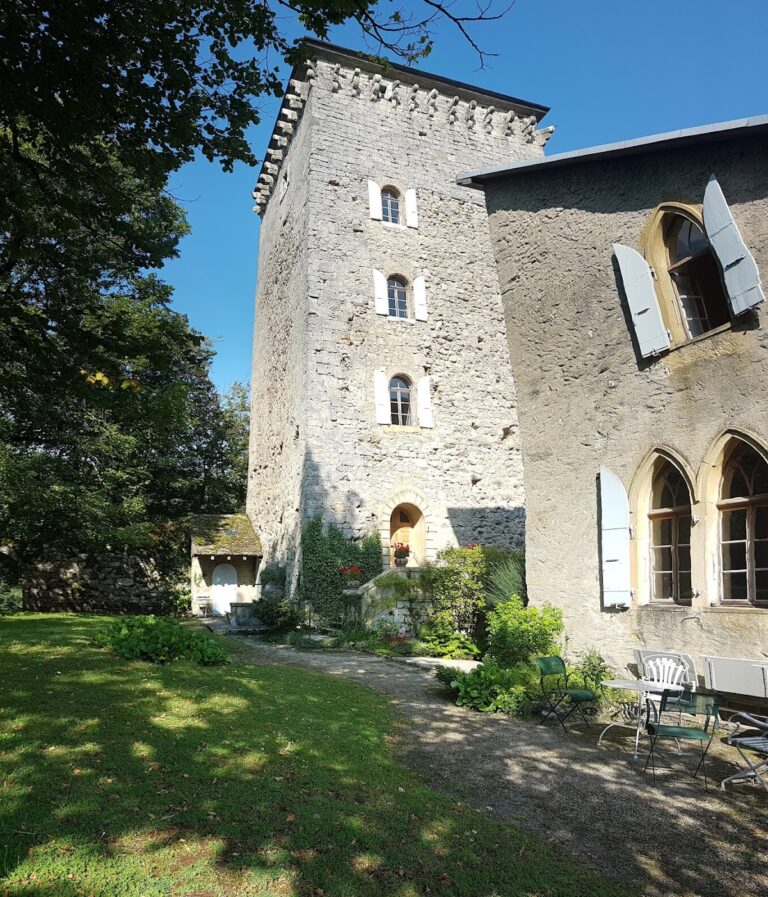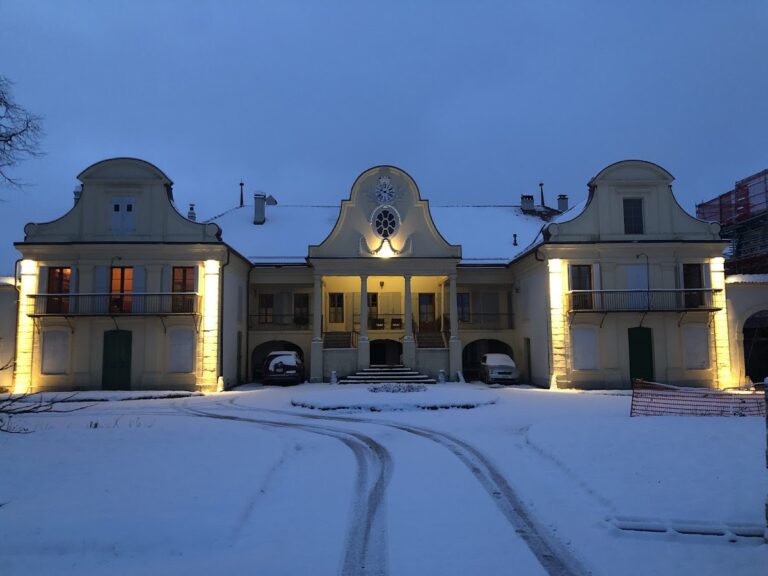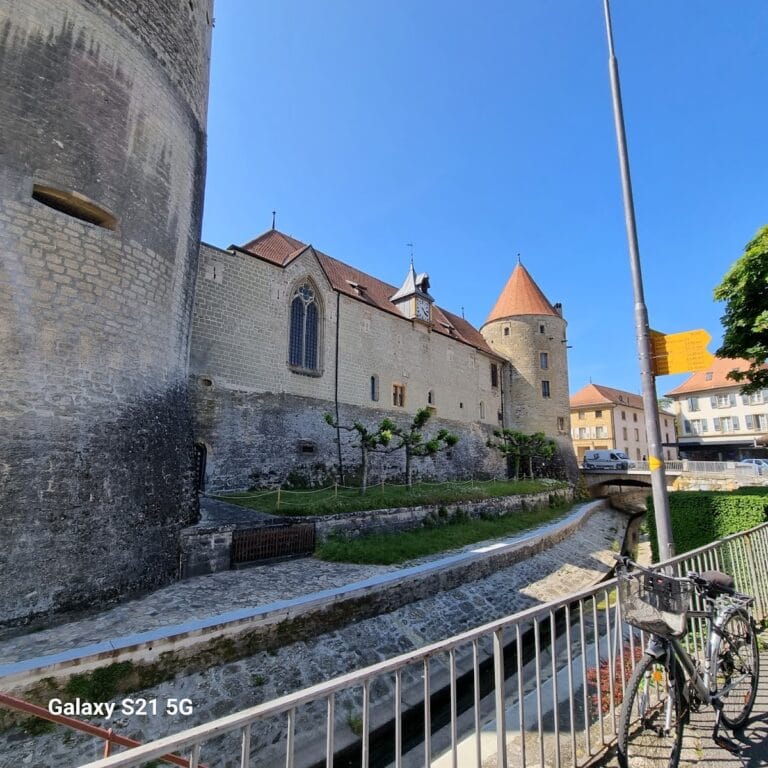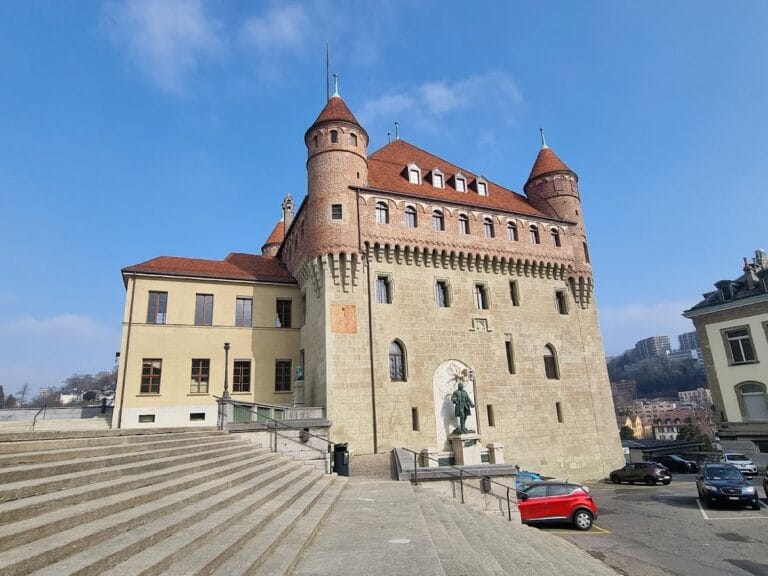La Sarraz Castle: A Medieval Fortress and Cultural Museum in Switzerland
Visitor Information
Google Rating: 4.6
Popularity: Low
Google Maps: View on Google Maps
Official Website: www.chateau-lasarraz.ch
Country: Switzerland
Civilization: Unclassified
Remains: Military
History
La Sarraz Castle stands in the municipality of La Sarraz in Switzerland, and was originally built during the medieval period by the local La Sarraz family. The earliest record of a fortified structure on this site dates back to 1049, placing its origins firmly within the Middle Ages in a region shaped by feudal customs.
The castle’s development occurred mainly over several centuries. Its initial core includes a 12th-century keep, a stone tower serving as a stronghold and residence. During the 13th century, the main residential building was added, reflecting the expanding domestic needs of its noble occupants. In the following century, the 14th century, the construction of a guard tower enhanced the castle’s defensive capabilities as local conflicts and security demands evolved.
Throughout the late medieval and early modern periods, La Sarraz Castle was the centerpiece of a local lordship. Ownership passed through several noble families connected by lineage: the Grandson-La Sarraz, the Montferrant-La Sarraz, and finally the Gingins-La Sarraz families. This continuity lasted until around 1700. The Gingins family, whose tenure began in the 16th century, gradually shifted their primary residences away from the castle toward homes in Bern and other neighboring estates, leading to a slow decline in the castle’s status as a main dwelling.
The 16th century was a time of both damage and renewal for the castle. In the aftermath of pillaging in 1475 and partial burning during conflict in 1536, the castle underwent significant modifications aimed at repair and modernization. These interventions reflected changing military and residential needs of the time.
In the early 19th century, the castle gained new cultural significance under the residence of the historian Frédéric Charles Jean de Gingins de la Sarraz. He commissioned renovations that introduced stylistic influences of neoclassicism coupled with neo-Gothic elements. Architect François Recordon designed new facades in the neo-Gothic style, while Louis Wenger added a vaulted pseudo-chapel in the eastern tower. This chapel was specifically created to house the tomb of François I, which had been recently rediscovered in a nearby chapel, illustrating an interest in preserving and celebrating local heritage.
By the 20th century, La Sarraz Castle transitioned from noble residence to cultural institution. The Mandrot family acquired the property late in the century, with Hélène de Mandrot becoming a pivotal figure until her death in 1948. She transformed the castle into a gathering place for avant-garde cultural and artistic movements, hosting landmark events such as the first International Congress of Modern Architecture (CIAM) in 1928 and the inaugural independent film congress in 1929. These meetings drew luminaries like the filmmaker Sergei Eisenstein and the architect Le Corbusier, marking the castle as a crossroads for modern creativity.
The public museum at La Sarraz opened in 1922, originally displaying family heirlooms of portraits and furniture. Over time, the collection expanded to include artifacts representing everyday life, local art, and illuminated manuscripts, broadening the castle’s role as a regional cultural repository. Extensive renovations between 1987 and 1999 updated the exhibits and emphasized the castle’s historical atmosphere as a seigneurial residence.
In 2012, damage from floods uncovered fragments of medieval murals, leading to focused research conducted by the University of Lausanne. These scholarly efforts culminated in a 2021 reopening featuring an interactive exhibition titled “900 years of dynasties,” underscoring the castle’s unique heritage of continuous family occupation through the centuries.
Since 1982, the castle grounds have housed the Swiss Museum of the Horse, established in a converted barn. This museum presents both permanent and temporary exhibitions relating to the cultural and historical significance of horses, and periodically hosts events such as an annual festival in the castle’s courtyard and park.
La Sarraz Castle is officially recognized as a Swiss heritage site of national importance and carries the European Heritage Label, reflecting its enduring role as a monument of historical and cultural value within Switzerland and Europe.
Remains
La Sarraz Castle occupies a rocky outcrop on the Swiss plateau between Vallorbe and Lausanne, forming a fortified complex characteristic of medieval lordly residences. The castle’s layout integrates structures from successive centuries, combining defensive and residential architecture built primarily from local stone.
The oldest surviving feature is the 12th-century keep, a tall tower serving as the castle’s main stronghold. Constructed with thick stone walls, this tower formed the core defensive element and provided living quarters for the lord. Its robust medieval masonry still stands, offering a tangible link to the castle’s original fortification.
Attached to the keep is the 13th-century residential building, added to accommodate growing domestic functions beyond the keep’s fortified confines. This elongated structure reflects medieval manor design with spaces arranged for daily life and entertaining. Its construction employed traditional stone techniques with timber roofing, adjusted over the centuries through renovations.
In the 14th century, a guard tower was established to enhance surveillance and defense. Positioned to oversee approaches to the castle, this addition represents the evolving military concerns during a period of frequent regional conflicts. The tower’s durable stone construction ensured its preservation through the ages.
The castle underwent significant alterations in the 16th century following episodes of pillaging in 1475 and burning in 1536. Repairs and modifications from this era integrated new structural and aesthetic elements, including some interior features such as molded beam ceilings dated between 1550 and 1600 — especially notable in the Knights’ Hall. These ceilings remain close to how they appeared during the early 20th century when the castle began its function as a museum.
The 19th-century renovations brought important stylistic changes. Architect François Recordon designed neo-Gothic facades, adding pointed arches and decorative elements that echoed medieval forms but reflected 19th-century romantic historicism. Louis Wenger’s addition of a pseudo-chapel at the base of the castle’s eastern defense tower included vaulted ceilings, creating a space intended to house the tomb of François I. This chapel used stone vaulting techniques to enhance its ecclesiastical appearance within a formerly defensive setting.
The castle’s exterior environment was also transformed in the 19th century with the removal of the enclosing courtyard wall, allowing the creation of an English-style park. This landscaping softened the medieval fortress’s appearance and introduced a picturesque natural setting around the buildings.
Inside, the museum has preserved a tradition of “period rooms,” reconstructing interiors using furniture, portraits, and household objects dating to the era they represent. Since the late 20th century, thematic rooms with glass display cases have complemented these settings. More recently, “white cube” galleries have been added—windowless, white-walled spaces carefully inserted into existing rooms to focus visitors’ attention solely on selected objects.
Among the collections, illuminated manuscripts stand out, notably the Book of Hours of Jean II de Gingins from circa 1420–1430, richly decorated and revealing the castle’s medieval scholarly connections. The furnishings include pieces crafted by prominent cabinetmakers and portraits by artists from the local region and Bern, illustrating the artistic heritage and social status of the castle’s owners.
The Swiss Museum of the Horse, housed in a former castle barn since 1982, occupies a renovated agricultural building within the castle grounds. This museum presents both permanent displays and changing exhibitions on equine history and culture. It also hosts events like the annual horse festival, which takes place in the grounds’ courtyard and park, tying the site’s heritage to that of horse breeding and riding traditions in Switzerland.
Overall, La Sarraz Castle remains an impressive medieval complex that integrates centuries of architectural developments and changing uses. Its features, preserved and adapted over time, provide a layered historical narrative visible in stone, wood, and curated collections.




